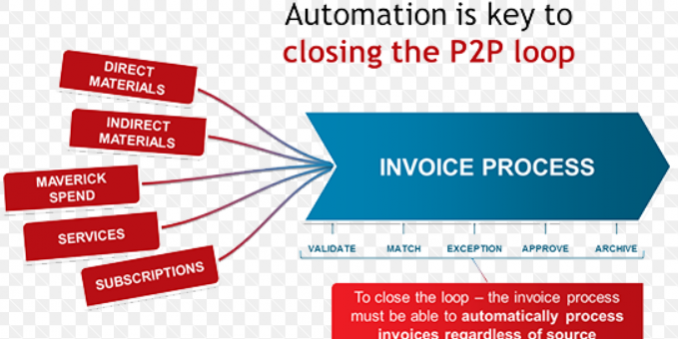Automation for Every Step of the Procure-to-Pay Process
Adapting your organization to the modern business climate means automating and integrating your work flow. Automation saves valuable hours of manual work and lowers the cost of production for companies. Integration makes insight-rich information more readily available for making informed business decisions.
That’s the accepted theory that’s behind the ongoing mass-migration to cloud-based, fully integrated software as a service (SaaS) solutions.
Pioneer products like Salesforce for CRM, and QAD EA in the ERP space have advanced the state of the art and boosted adoption. Other SaaS providers have proven that automation is not the end of the personal touch. In fact, the businesses that seem to thrive in this new field are those that are able to mold SaaS solutions to suit their own unique needs and cultures.
If you’re looking for automation-enabled SaaS solutions for your business, it’s important to understand the time and cost-saving benefits of automating the procure-to-pay (P2P) process. This is a labor-intensive critical business function that sees immense benefits from cloud-based software services. Not only can your organization save on labor costs; P2P automation offers a number of additional benefits as well.
Automated Procurement
There are a lot of moving parts involved with procurement. Deploying an automated procurement solution provides the immediate benefit of saving time on the repetitive aspects of this piece of the P2P process.
Procurement is repetitive work and it’s hard to get right. It takes a significant amount of effort to coordinate the production side of your operation and approve the right purchases requisitions.
Simply gathering information from different suppliers is a labor intensive process, but it’s a great example of the way automation can solve procurement. With a supplier catalog management solution, supplier information is aggregated in one place and made easily accessible.
While spending caps are an important policy, it’s hard and sometimes seems impossible to comply with pre-set spending limits in practice. Reading the materials supply market, interpreting inventory and production-side data, and ultimately making the right decision and generating a purchase approval is a complicated process.
Automated approval is a great answer to this issue, a process that strictly follows a predetermined set of spending rules and compliance. Seamlessly integrating with ERP databases such as QAD EA, an approval routing workflow will achieve optimal decisions automatically, saving your staff time to work on other projects. This also keeps spending under a firm limit, eliminating excess or unplanned-for procurement, or Maverick spending.
RFQ and Invoice Management
Much of the time spent in the manual P2P process involves generating RFQs, processing and cataloging quotes as they come, handling purchase orders (POs) and invoices, and managing a filing system to store this information.
The right automated supplier invoice reconciliation solution saves time on these specific tasks with Digitization and Automation.
Creating and sending an RFQ is a simple and extremely repetitive task. Accepting and interpreting incoming quotes from suppliers is important work, but it’s easy to do poorly. Both requesting and receiving quotes from suppliers are very appropriate tasks for automation. In fact, a fully integrated P2P framework can use this information to make better informed decisions in other parts of the procurement process. This is an area where automation shines.
Receiving and responding to invoices is another labor-intensive process. With an integrated Payment Management Portal, automated invoice reconciliation is a simple process that saves a lot of time.
Filing quotes, purchase orders, and fulfilled invoices is an important task because, in addition to complying with internal record-keeping protocols, it provides a record of supplier pricing information. However, a traditional filing system is generally a poor option for providing retroactive business insights. Documents tucked away in a physical file must be taken out and looked at, page after page, in order to extract meaningful insight.
An automated filing system scans physical documents – such as quotes, POs and invoices – and stores them in a secure, backed-up cloud system. This keeps them safe and readily accessible for any member of your procurement staff that needs access to them. More importantly, it automatically interprets relevant data and aggregates it in a way that makes it instantly usable, ready to cross-reference against the other insight-filled data stored on the cloud.
Automation and Digital Migration
Automation is an important part of making an organization-wide digital transition, but it’s not everything. Making the transition successfully requires a close look at Business Process Optimization.
To understand more about how to prepare your business for improvement, contact us. We specialize in optimizing your work flow and can help you see a strong, quick ROI…!
Who is ISS Group?
All of our BPI Solutions are ‘seamlessly’ integrated with QAD EE and SE, and are 100% Web-based providing (24×7 access)
ISS Group delivers Solutions which Digitize Business Processes to Connect People and Processes via the Cloud, Mobile devices, and Social Networks
55 Madison Ave, Suite 400
Morristown, NJ 07960
Toll Free: 888-547-7476
Direct: (973) 729-0013
www.issgroup.com








